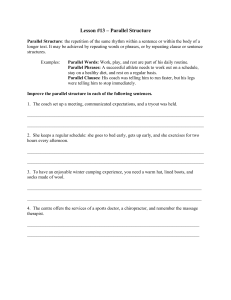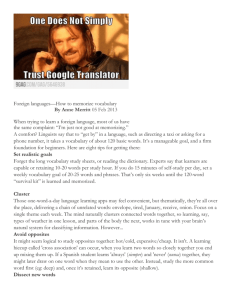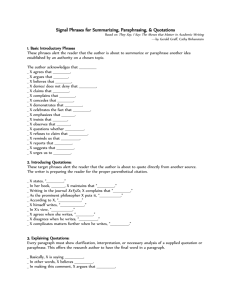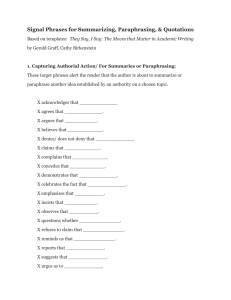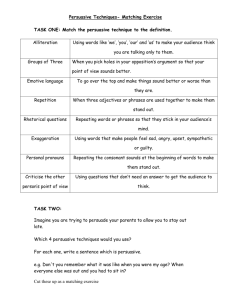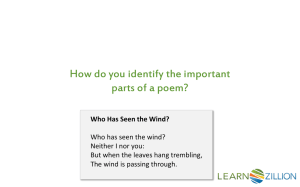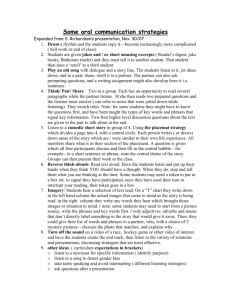Cohesion and Coherence
advertisement
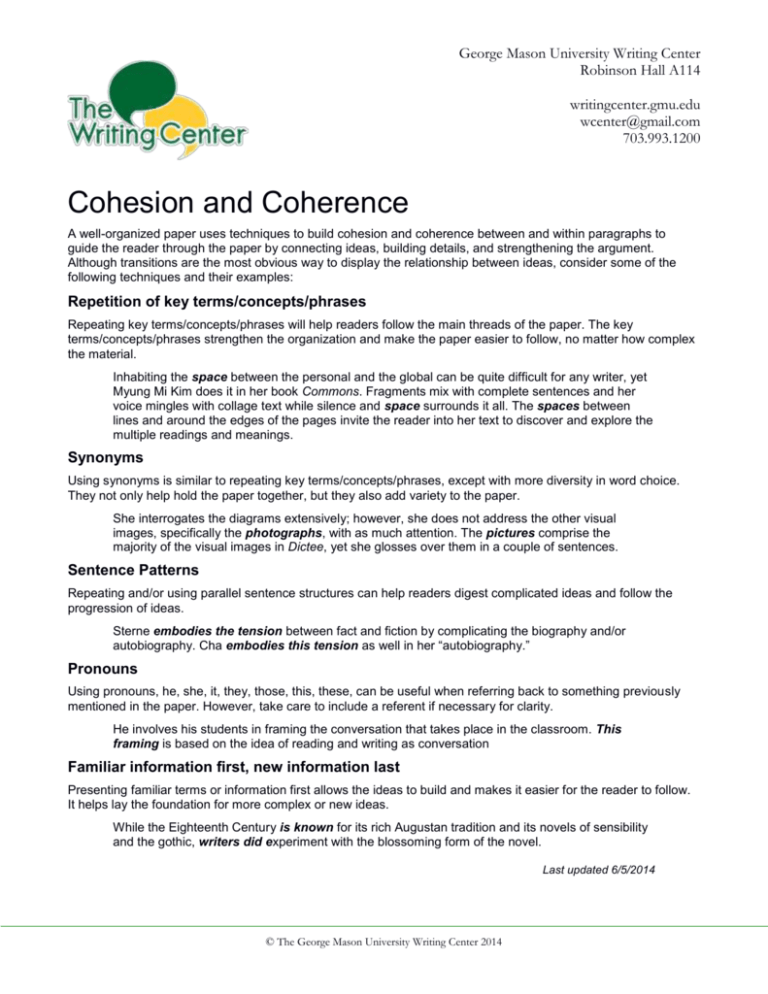
George Mason University Writing Center Robinson Hall A114 writingcenter.gmu.edu wcenter@gmail.com 703.993.1200 Cohesion and Coherence A well-organized paper uses techniques to build cohesion and coherence between and within paragraphs to guide the reader through the paper by connecting ideas, building details, and strengthening the argument. Although transitions are the most obvious way to display the relationship between ideas, consider some of the following techniques and their examples: Repetition of key terms/concepts/phrases Repeating key terms/concepts/phrases will help readers follow the main threads of the paper. The key terms/concepts/phrases strengthen the organization and make the paper easier to follow, no matter how complex the material. Inhabiting the space between the personal and the global can be quite difficult for any writer, yet Myung Mi Kim does it in her book Commons. Fragments mix with complete sentences and her voice mingles with collage text while silence and space surrounds it all. The spaces between lines and around the edges of the pages invite the reader into her text to discover and explore the multiple readings and meanings. Synonyms Using synonyms is similar to repeating key terms/concepts/phrases, except with more diversity in word choice. They not only help hold the paper together, but they also add variety to the paper. She interrogates the diagrams extensively; however, she does not address the other visual images, specifically the photographs, with as much attention. The pictures comprise the majority of the visual images in Dictee, yet she glosses over them in a couple of sentences. Sentence Patterns Repeating and/or using parallel sentence structures can help readers digest complicated ideas and follow the progression of ideas. Sterne embodies the tension between fact and fiction by complicating the biography and/or autobiography. Cha embodies this tension as well in her “autobiography.” Pronouns Using pronouns, he, she, it, they, those, this, these, can be useful when referring back to something previously mentioned in the paper. However, take care to include a referent if necessary for clarity. He involves his students in framing the conversation that takes place in the classroom. This framing is based on the idea of reading and writing as conversation Familiar information first, new information last Presenting familiar terms or information first allows the ideas to build and makes it easier for the reader to follow. It helps lay the foundation for more complex or new ideas. While the Eighteenth Century is known for its rich Augustan tradition and its novels of sensibility and the gothic, writers did experiment with the blossoming form of the novel. Last updated 6/5/2014 © The George Mason University Writing Center 2014
